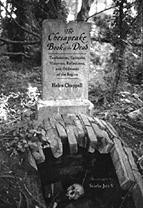
Reviews
Undoubtedly, Death and Rebirth in a Southern City is an invaluable resource for understanding deathways in Richmond and the region more broadly. At a time when the city's memorial practices are coming under increasing scrutiny, Smith's powerful text provides residents with a primer that might help us construct a more inclusive practice of memory.
Deeply researched and focused as much on the voices of those in the past and present who have used and engaged with these cemeteries as on the physical landscapes themselves, Death and Rebirth in a Southern City offers an important new framework for engaging with burial sites as part of the constantly evolving dynamics of race, class, and religion in American society.
Death and Rebirth in a Southern City: Richmond's Historic Cemeteries engages audiences on the relevance of public history as studied through the preservation of white and Black burying grounds in a city that was once the capital of the Confederacy.
This is a timely and compelling book that combines the strands of history, archaeology, ethnography, and preservation. Most importantly, it provides credibility for the voices of descendants and other community members who care deeply about these sacred and historic sites. The author has done a masterful job of providing the historic context for centuries of burials and helping the reader understand why these sites still matter today.
A timely and compelling book combining the strands of history, archaeology, ethnography, and preservation. Most importantly, Ryan K. Smith conveys the voices of descendants and other community members who care deeply about these sacred and historic burial sites.
Exceptionally well written, unfailingly clear and engaging, and sometimes even stirring.
In Death and Rebirth in a Southern City, Ryan Smith forces Americans to realize that marginalization in death is an acute reflection of the systemic oppression experienced in life. With a historical, social, and cultural lens honed by years of teaching public history, Smith pushes us to see cemeteries not as ethnic mortuary enclaves or even siloed spaces, but landscapes impacted by slavery, genocide, and Jim Crow segregation, in a way that maps a fuller and more complete history of how only some groups truly rest in peace.
Death and Rebirth in a Southern City brings into sharp relief the issues of race, power, and memorialization that haunt Richmond's politics and culture. Smith deftly weaves together a definitive history of Richmond's cemeteries with the stories of citizen-historians and activists who are currently struggling to redefine the city's memorial landscape. Most disturbingly, he documents how a history of disrespect for Black bodies mirrors the larger culture's disregard for Black Lives even today.
Book Details
Introduction: The Southern Dead and the Present Moment
Chapter 1. The Churchyard
Chapter 2. The African Burial Ground
Chapter 3. The New Burying Ground
Chapter 4. Grounds for the Free People of Color and
Introduction: The Southern Dead and the Present Moment
Chapter 1. The Churchyard
Chapter 2. The African Burial Ground
Chapter 3. The New Burying Ground
Chapter 4. Grounds for the Free People of Color and the Enslaved
Chapter 5. The Hebrew Cemeteries
Chapter 6. The Confederate Cemeteries
Chapter 7. The National Cemeteries
Chapter 8. The Post-Emancipation Uplift Cemeteries
Epilogue
Acknowledgments
Notes
Index






